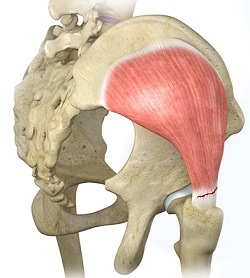Hip Adductor Injuries

What are Hip Adductor Injuries?
Hip adductors are the group of muscles on the inner side of your thigh that enable adduction or the ability to bring the thighs together.
A hip adductor injury is also called a groin strain or groin tear and involves any of the adductor muscles. These injuries are common among athletes and those who play hockey, football, soccer, basketball, tennis, baseball, etc.
Causes of Hip Adductor Injuries
The main causes of hip adductor injuries include but are not limited to:
- Forced push-off (side-to-side motion)
- Swift change in direction while running or jumping
- Sudden movements such as kicking, twisting
- Lifting heavy objects
- Exercises such as resistance training
- Overuse or overstretching of the adductor
- Previous adductor injury
Signs and Symptoms of the Condition
Symptoms of hip adductor injury can range from mild to severe, depending on the degree of the injury. They normally manifest in any or all of the following:
- Snapping sound at the time of injury
- Pain in the inner thigh (anywhere from the hip to the knee)
- Decreased strength in the upper leg
- Bruising or swelling in the groin area
- Difficulty walking or running
- Pain when you bring your legs closer
- Pain when you try to raise your knee
What if Hip Adductor Injuries are Left Untreated?
If untreated, the condition can result in:
- Tight and weak adductor muscles
- Chronic pain and inability to return to sport
- Recurring pain when returned to activity
- Bone infections (in very severe cases)
How is the Condition Diagnosed?
Your doctor starts the diagnosis by asking you how the injury happened and under what circumstances it happened. Subsequently, the doctor will do a physical examination of the injured area.
Your doctor may also order an X-ray and follow up with an MRI to evaluate the seriousness of your injury.
Treatment of Hip Adductor Injuries
The priority of treatment is to reduce pain and swelling soon after the injury. The initial treatment for the first few days is likely to be the protocol for any muscle injury.
- Rest, ice, compression and elevation (RICE)
- Use of nonsteroidal anti-inflammatory drugs
However, depending on the severity of the condition, you may require additional treatments such as:
- Physiotherapy
- Massage therapy
- Electrotherapy
- Heat and stretching
If the injury is very serious, you may need surgery to repair and restore the muscles.
Prevention of Hip Adductor Injuries
You can prevent hip adductor injuries if you:
- Avoid adductor muscle use without proper training and/or warm up
- Stop sports activities when you feel pain or tightness inside your thigh
- Regularly stretch and strengthen your adductor muscles
- Continue the training even during a break from sports activities
- Resume activities slowly when returning from a previous injury
Related Topics:
- Hip Adductor Injuries
- Pediatric Femur Fracture
- Stress Fractures of the Hip
- Avulsion Fractures of the Pelvis
- Hip Injury
- Stem Cell Therapy for Hip Injuries
- Gluteus Tendon Tear
- Hip Pain
- Snapping Hip Syndrome
- Hip Bursitis
- Femoroacetabular Impingement
- Avascular Necrosis
- Hip Fracture
- Hip Dislocation
- Hip Labral Tear
- Hip Instability
- Hip Groin Disorders
- Subtrochanteric Hip Fracture
- Hip Abductor Tears
- Hip Synovitis
- Developmental Dysplasia
- Legg-Calve-Perthes-Disease
- Irritable Hip
- Hip Tendonitis
- Hip Pointer
- Transient Osteoporosis of the Hip
- Osteoarthritis of the Hip
- Inflammatory Arthritis of the Hip
- Groin Injuries in Athletes
- Periprosthetic Hip Infection
- Hamstring Injuries






